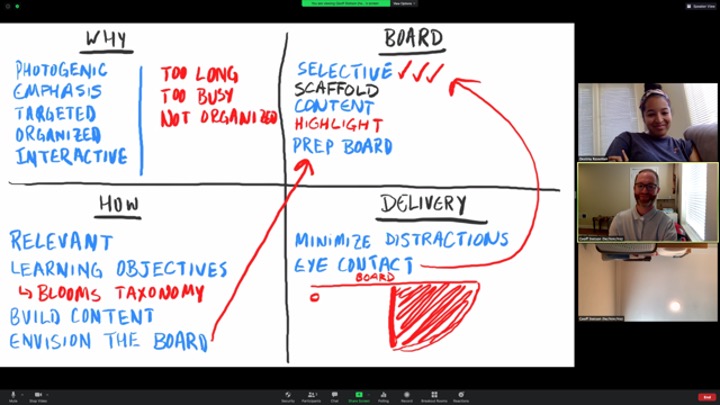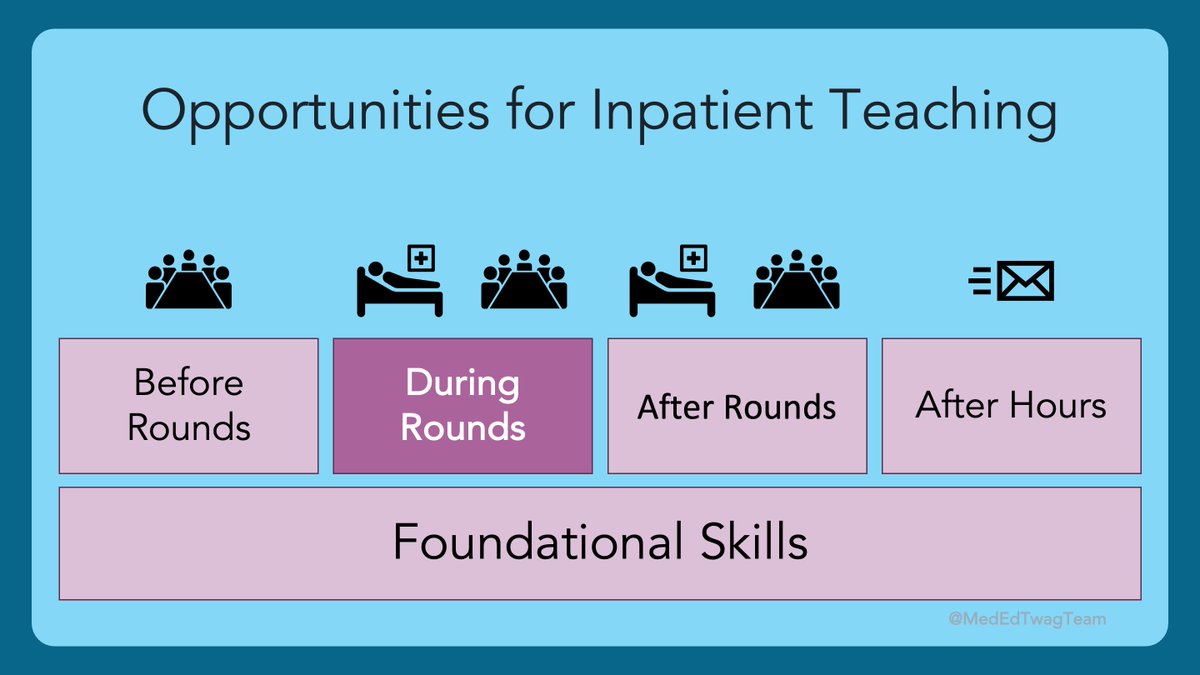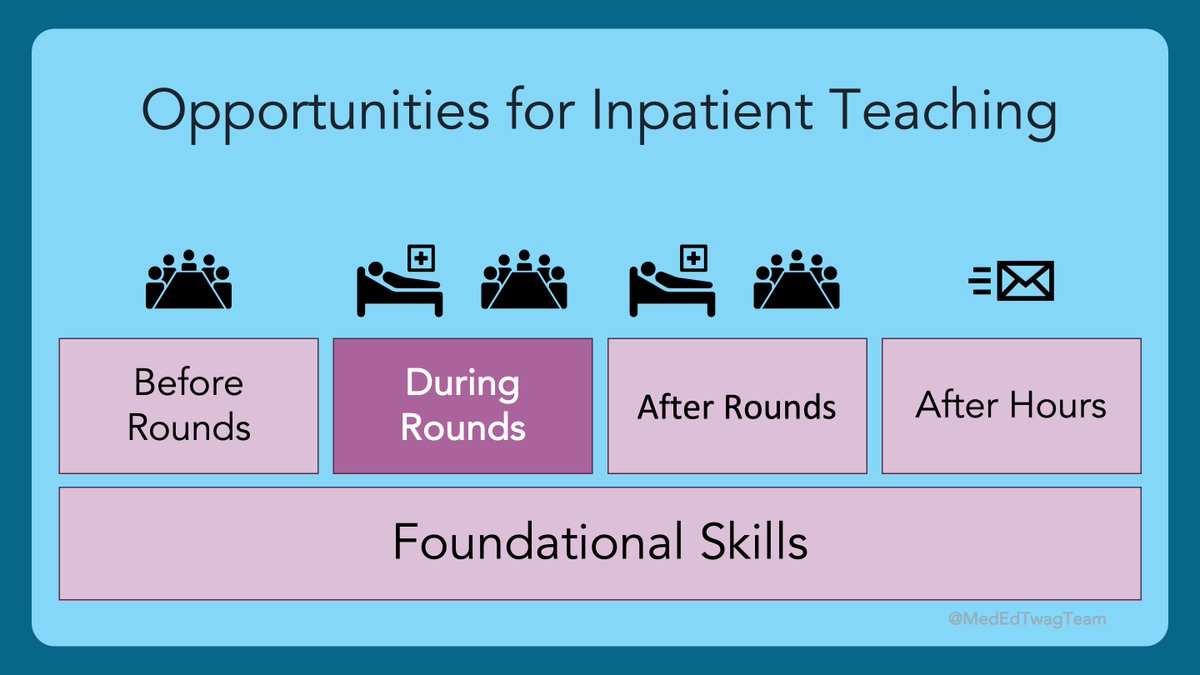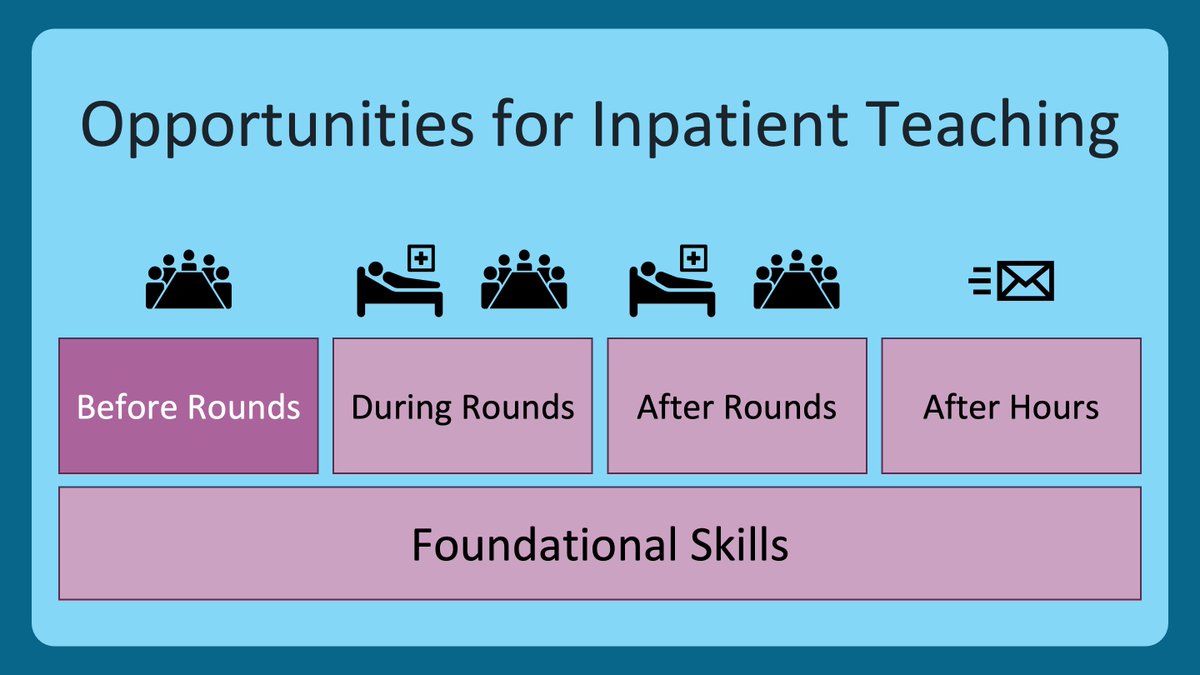1/ Creating a Safe Psychological Space in #MedEd – a 🧵
Yesterday, I wrapped up a month working with Dr. @DestinyRoseman as she participated in the teaching elective I run for the @UCSF Internal Medicine Residency.
Here is us "Zooming" 👇
Yesterday, I wrapped up a month working with Dr. @DestinyRoseman as she participated in the teaching elective I run for the @UCSF Internal Medicine Residency.
Here is us "Zooming" 👇

2/ She is the first learner for my sixth year running this program. It is one of my favorite parts of my job.
One of the activities I do with my learners is a journal club.
We read seminal #MedEd literature & stuff that is hot off the presses, then discuss our takeaways.
One of the activities I do with my learners is a journal club.
We read seminal #MedEd literature & stuff that is hot off the presses, then discuss our takeaways.
3/ It's something I started about a year ago for a few reasons:
1⃣ Keep up on the literature & continue to grow as an educator
2⃣ Learn about these issues from the perspective of a learner
3⃣ Make myself accountable to someone else to make sure I actually do it! (cheat code)
1⃣ Keep up on the literature & continue to grow as an educator
2⃣ Learn about these issues from the perspective of a learner
3⃣ Make myself accountable to someone else to make sure I actually do it! (cheat code)
4/ Yesterday, we were talking about creating psychological safety on a team.
Me: I have approaches to feedback, asking questions, rapport-building, etc. for which the foundational principle is to create psychological safety on the team.
Me: I have approaches to feedback, asking questions, rapport-building, etc. for which the foundational principle is to create psychological safety on the team.
5/ Me continued: But, I don’t know if I have an overarching approach to psychological safety itself.
Dr. DR: Hmmm…
(I could see the wheels turning)
We moved on to a different topic.
A few minutes later…
Dr. DR: Want to know how you created safety for me on this rotation?
Dr. DR: Hmmm…
(I could see the wheels turning)
We moved on to a different topic.
A few minutes later…
Dr. DR: Want to know how you created safety for me on this rotation?
6/ Dr. DR:
1⃣You told me you were really excited to work with me & that you love this part of your job.
2⃣You told me I would be uncomfortable. You told me I would be in my “stretch zone”, but not in my “crisis zone”.
1⃣You told me you were really excited to work with me & that you love this part of your job.
2⃣You told me I would be uncomfortable. You told me I would be in my “stretch zone”, but not in my “crisis zone”.
7/ Dr. DR continued:
3⃣You told me I would make mistakes, I would learn, and that’s what this rotation is all about. This made me feel safe.
3⃣You told me I would make mistakes, I would learn, and that’s what this rotation is all about. This made me feel safe.
8/ First off, THANK YOU Dr. @DestinyRoseman.
Second, here's what Dr. DR taught me:
1⃣ Learners appreciate your enthusiasm
2⃣ Normalize mistakes and frame them as learning opportunities
3⃣ The #GrowthMindset...Oh how I love thee
Second, here's what Dr. DR taught me:
1⃣ Learners appreciate your enthusiasm
2⃣ Normalize mistakes and frame them as learning opportunities
3⃣ The #GrowthMindset...Oh how I love thee
9/ Think about what Destiny said...
I told her, EXPLICITLY, that my intentions were to make her uncomfortable, and to make her stretch, and this made her feel safe.
I am an unabashed fan of the #GrowthMindset, and Dr. DR embodies that.
I told her, EXPLICITLY, that my intentions were to make her uncomfortable, and to make her stretch, and this made her feel safe.
I am an unabashed fan of the #GrowthMindset, and Dr. DR embodies that.
10/ Dr. DR was a high jumper in college.
This month, she was going for her personal record in the #MedEd High Jump.
My job was to set the bar for her, encourage her, and be the cushy mat she got to fall back on as she strived to reach her goal.
This month, she was going for her personal record in the #MedEd High Jump.
My job was to set the bar for her, encourage her, and be the cushy mat she got to fall back on as she strived to reach her goal.
11/ In case you were wondering, she set a new PR, but she ain't done...
#MedTwitter #MedHum #storytelling
CC: @rabihmgeha @DxRxEdu @LekshmiMD @Sharminzi @vineet_chopra @PCH_SF @HarvardMacy @ClinicalTeacher @UCSFMedicine @UCSFIMChiefs @ucsfmed @DrCalvinChou
#MedTwitter #MedHum #storytelling
CC: @rabihmgeha @DxRxEdu @LekshmiMD @Sharminzi @vineet_chopra @PCH_SF @HarvardMacy @ClinicalTeacher @UCSFMedicine @UCSFIMChiefs @ucsfmed @DrCalvinChou
• • •
Missing some Tweet in this thread? You can try to
force a refresh



















